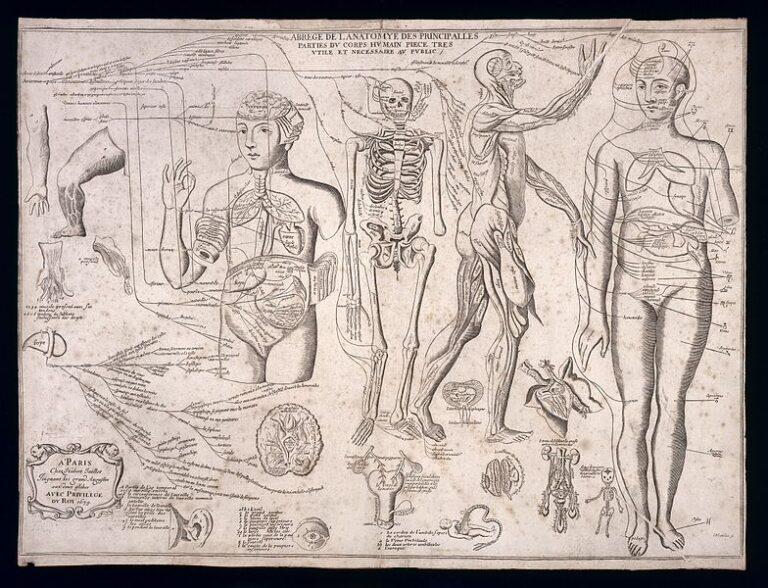Carmen Machado and the Corporeal Text

Her Body and Other Parties, Carmen Machado’s debut short story collection, has already received extensive critical praise for innovations in the realm of ‘genre-bending.’ But Machado bends much more than genre in these brilliant stories—she’s bending the very fabric of storytelling, working with new models of textuality, orality, and corporeality.
The title of this collection imagines that the book is not only a body of text, but is also ‘her’ body-as-text. The feminine possessive underscores everything else, casting the entire collection as a meditation on storytelling, bodily autonomy, and the threads that connect them.
The first story, “The Husband Stitch,” begins with a parenthetical note that sets the stage for similar notes throughout the piece. The note addresses the reader directly, still within the first-person narrative voice, to instruct them on how to read the story out loud:
(If you read this story out loud, please use the following voices:
ME: as a child, high-pitched, forgettable; as a woman, the same. […]
ALL OTHER WOMEN: interchangeable with my own.)
These moments punctuate the text every few pages, with the reader’s scenario becoming gradually more and more non-realistic. In a way, Machado is triangulating her own authorial voice with that of the narrative speaker (the main character, a woman who wears a green ribbon around her neck) and, thirdly, that of the speaking reader.
The reader becomes a sort of translator: the author appropriates their lips and vocal chords to convert written language into speech. But it turns out that the act of reading is always already an embodied experience: whether you’re reading with your eyes, listening to an audiobook with your ears, or feeling the bumps of braille with your fingertips—reading is translating arbitrary sensations into meaningful stories.
As the story goes on, Machado manipulates this reader’s body, implicating it within the narrative alongside the main character. Shifting away from speech and language, she attends to the breath and the lungs:
(If you read this story out loud, the sounds of the clearing can be best reproduced by taking a deep breath and holding it for a long moment. Then release the air all at once, permitting your chest to collapse like a block tower knocked to the ground. Do this again, and again, shortening the time between the held breath and the release.)
Here, Machado is working with the association between voice and breath, and then goes on to extend that effect to the entire body. After a passage where the main character gives birth and receives a non-consensual surgical cut (and later, the “extra stitch” implied in the title, also without her consent), the attention turns back to this conjectural spoken narration. Machado imposes physicality onto this ‘speaker’ in an imitation of the other speaker—the “I” from the story—with chilling violence:
(If you are reading this story out loud, give a paring knife to the listeners and ask them to cut the tender flap of skin between you index finger and thumb. Afterward, thank them.)
The hypothetical reader is more than a mouth and a voice. They are a whole, wound-able body that becomes embedded in the text, just like the character. The relationship of reader to character, always complicated with elements of both distance and intimacy, comes into a new light through this sense of embodiment.
The surprising conclusion of the story should be left alone here, but this notion of interlacing bodies and stories keeps coming back throughout the collection. One story in the second half, “Real Women Have Bodies,” unfolds into a fantastical premise: an ongoing epidemic in which women’s bodies disappear, while they themselves are left behind, nearly invisible—“see-through and glowing faintly, like afterthoughts.” Their experiences are so intangible that their selves become intangible too: a literal manifestation of ‘women’s erasure.’
Cloth and thread become increasingly important as the story progresses, echoing the imagery of the surgical stitches and green ribbon from “The Husband Stitch.” In “Real Women Have Bodies,” the narrator discovers that the shop where she works has been selling dresses inhabited by the disembodied women, who are sewn into the material after they occupy the space in the dress forms (mannequins for needlework):
The needle — trailed by thread of guileless gold — winks as Petra’s mother plunges it through the girl’s skin. The fabric takes the needle, too. The girl does not cry out. Petra’s mother makes tight, neat stitches along the girl’s arm and torso, skin and fabric binding together as tightly as two sides of an incision.
Here, the imagery of the needle and thread combines intimations of bondage and domesticity, which are inevitably caught up with notions of sexuality and womanhood—where bondage can refer to women’s containment within social norms as well as the literal sexual practice.
Bodies and texts are thus joined by a third, less abstract entity looming large in the collection: textiles. Cloth and text have an illustrious history of engaging with each other, from the legacy of early woven paper to the very etymologies of ‘text’ and ‘textile’ (from the Latin texere, ‘to weave,’ and its corresponding perfect passive participle textus, ‘woven’). The violent yet commonplace imagery of a woman wielding a needle reminds us of how some human stories are neither oral nor written: they are stitched into quilts and tapestries, or tattooed onto our bodies, or braided into our hair.
Carmen Machado weaves together these concepts in her collection, illustrating how language will always rely on the body—spoken languages rely on the lips and ears, written languages rely on the hands and the eyes, and sign languages rely on the power of expressive gesture. When we talk about women’s bodies and women’s voices, it’s easy to forget that the two are inextricably linked. The craft of storytelling helps us remember that they are always stitched together, always tugging the other one closer.


